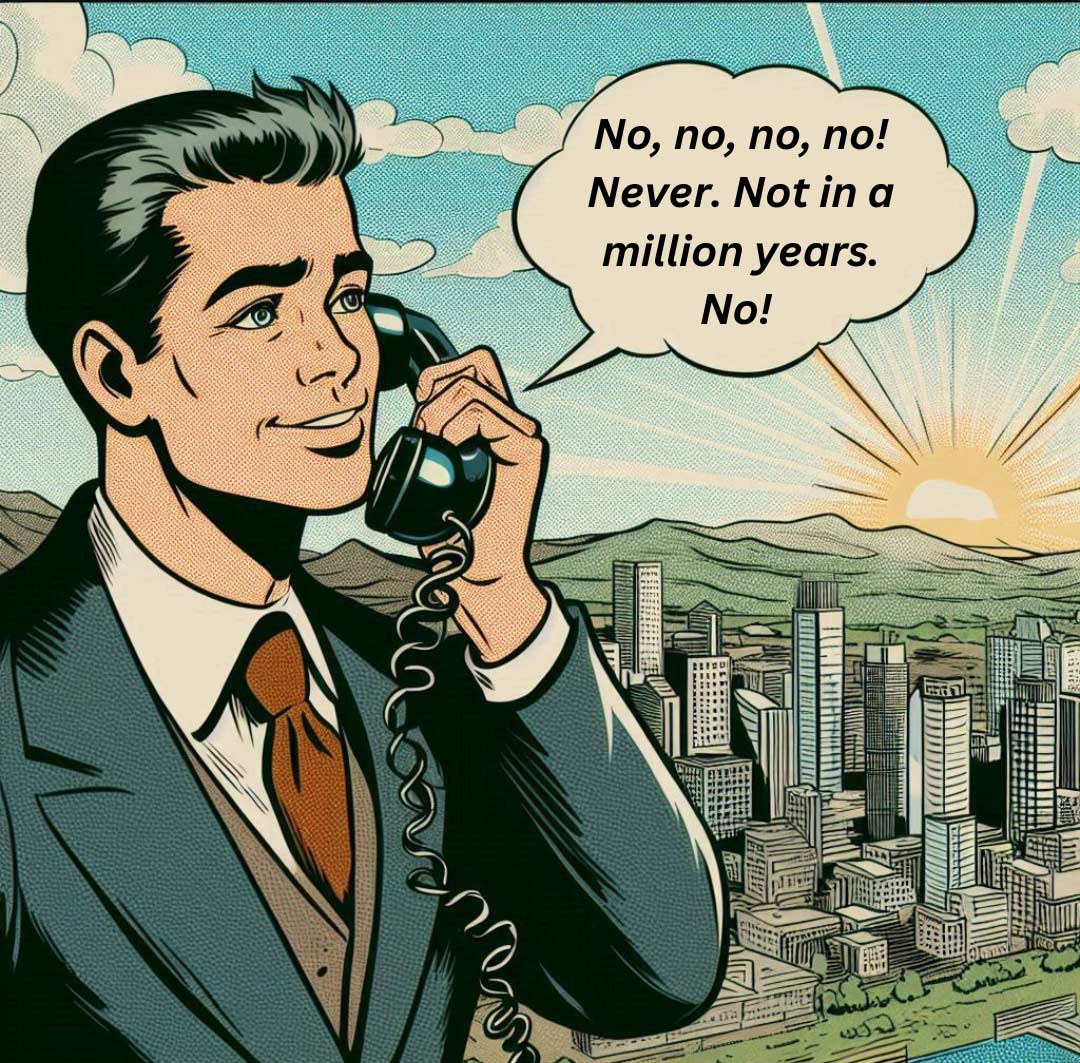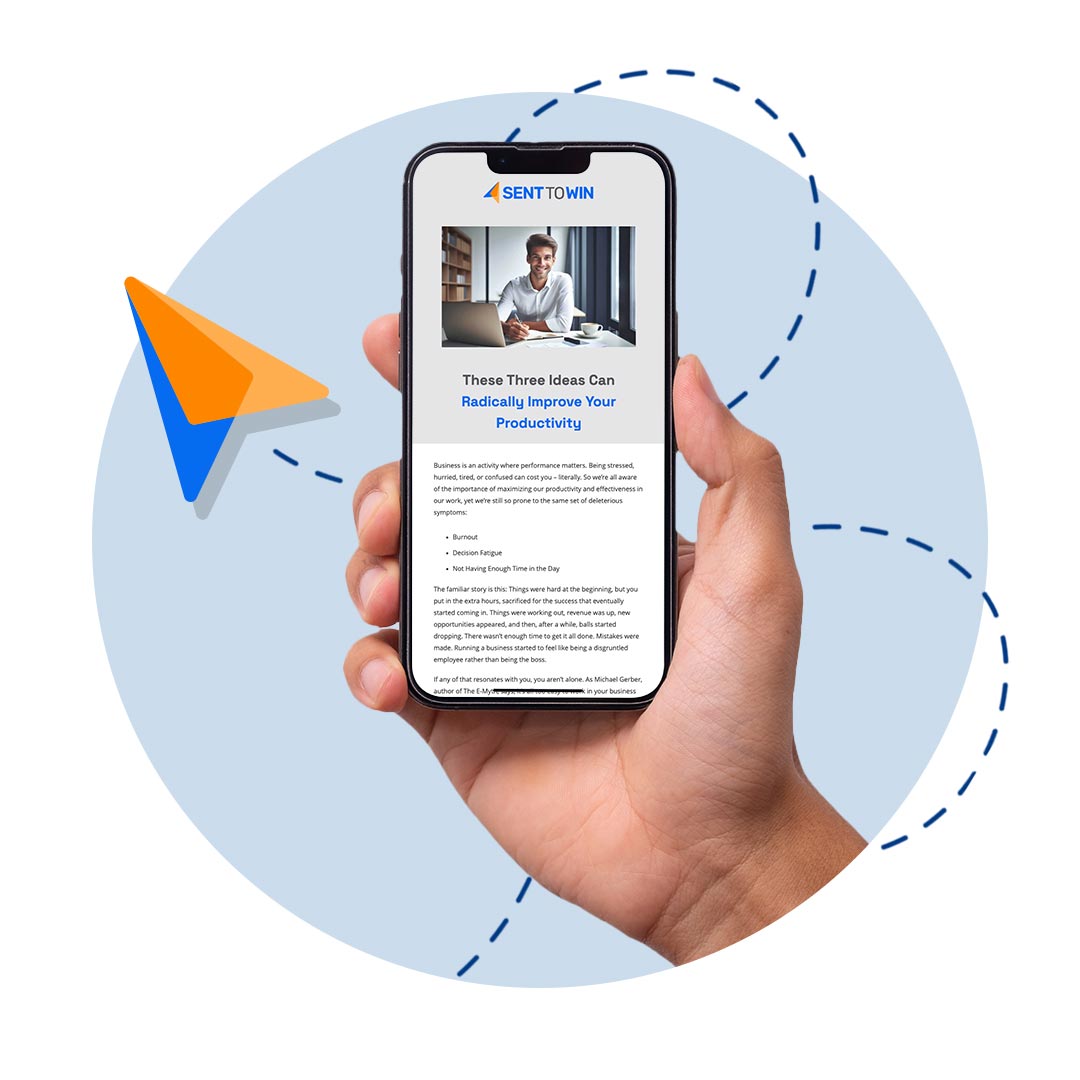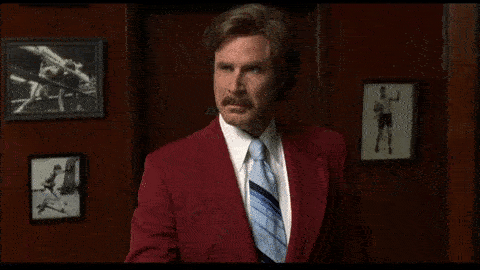One Minor Change To Increase Your Closing Rate

“So you’re saying there’s a chance…?”
TIPS & TRICKS
One Minor Change to Increase Your Closing Rate
You may or may not be “in sales,” but if you are a business owner or even a high-powered employee, chances are, the success of your company does in fact rely, to some extent, on people saying yes to your pitch. For those of us who are natural salespeople, this is great news. To those of us who aren’t… Well, thankfully there is a lot of good material out there that we can learn from. In this short article today, we want to highlight an extremely helpful little tactic that you can start employing right away, and be sure to let us know if it improves your close rate!
So what is this magical technique?
Let the customer say no. A lot.
Try to Get a “No.”
“Hold on,” you might be thinking. “Isn’t the idea of sales to get a ‘yes’?”
Sure. Sometimes. But here’s the problem with trying to get someone to say yes to “Want to buy this car?” or “Will you sign up for a membership?” or “Can I be your next VP of Marketing?” – If they say “No,” you’re kind of cooked. This is usually the final ask of the conversation, the only “yes” that really matters, and if you blow it, you’re done.
Sure, persistence can pay off, but it can also be annoying and off-putting, if a “No” has already been said with finality, like in the examples above. Conventional wisdom says that you want to get your target saying “Yes” a lot so that it’s easy to say the final “Yes” – the one that actually matters. So a lot of scripts go like this:
“Is this Mr. Thompson?”
Yes.
“Do you have a quick moment for something important?”
Yes.
“Do you use a shower at home?”
Yes.
“Is it important to you that your shower stays in good condition?”
Yes.
“Would you like to buy top-of-the-line shower paneling to prevent leaks and extend the life of your shower?”
No. *Click*
The salesman intentionally makes it difficult to say “no,” right up until the very end. Then, that first and only no shuts down the conversation totally, and makes it a failure. The script feels almost coercive, and the communication is certainly wooden. The customer is almost boxed into saying “Yes” over and over, without any real invitation to participate.
Listen to what master negotiator Chris Voss suggests:
“‘Yes’ is often a meaningless answer that hides deeper objections (and ‘Maybe’ is even worse). Pushing hard for ‘Yes’ doesn’t get a negotiator any closer to a win; it just angers the other side.”
What should you do then?
Voss suggests that you empower your target customer to start saying the word “no” early in the conversation. “No” is a reassuring word, because it makes people feel like they are in control, that they have some power, and that they are actually communicating. Even just flipping the script, according to an informal experiment Voss cites in his book Never Split the Difference, can greatly improve your success rate.
“I’m trying to reach Mr. Thompson – I haven’t got the wrong number, have I?”
No, this is him. You’ve got it right.
“Great, thanks. Hi, Mr. Thompson. I just have a couple of questions that will take less than twenty seconds – do you mind?”
Well, no, I suppose not.
“Perfect. Alright, do you think that it’s acceptable for a leaky shower to run unaddressed in a home?”
Of course not.
“Do you do the sort of home maintenance on your property where you are regularly checking the inner workings of your shower, checking for micro-cracks in the porcelain, and identifying leaks?”
Well, not really, no.
“Sir, I sell these great shower surround panels that erase the need for that sort of maintenance. Is there any reason I can’t come by sometime in the next week to show you some samples of what we offer and give you a price to extend the life of your shower and eliminate costly plumbing bills?”
I… Well, I couldn’t do it until Friday.
“Can I come on Friday? Say in the morning?”
Alright, why not? Yes, that’ll be fine.
Now, there are more subtle ways of doing this, but at the end of the day, we have to stop being afraid of the word “No,” Voss teaches. “No” usually gives us more information, if we are asking the right questions. If objections arise, when “No” has already been introduced early on in the conversation, we have the opportunity to address these objections before we commit to making the hard ask at the end – whether the goal is to set an appointment, sell a piece of merchandise, or get signatures on a contract.
In our shower example, the second script is not a forced journey down a one-way road – there are opportunities for a customer to tell you that he is not in your target market, that he requires additional education, or that he has to schedule at a specific time. All of this information is useful, and it feels less irritating to the consumer, which is always a good thing.
Even just asking, “Is there anything that would potentially prevent you from doing a deal with me here today?” can be a good move, because it keeps the conversation open even if they say that there is, because you can then address the objection or provide a solution. And if they say
“No”… Then you’ve got yourself a sale.
Don’t be afraid of the word “No.” In fact, seek it out if you can. In the end, it’s only the final “Yes” that matters.
Quick Hits
- Elevation Church is accused of “high tech sheep-stealing” – using location-based ads to specifically target members of smaller churches.
- In a bizarre series of events, Brent Leatherwood, the head of the Southern Baptist Convention’s ethics and public policy arm, was fired and then reinstated in the span of 24 hours.
- Christianity Today reports that Christian rescue missions are strained for resources as homelessness reaches record highs.
- Arson attacks in France caused massive travel disruption ahead of the Olympic opener last week.
For Kingdom Leaders, By Kingdom Leaders
Bringing Kingdom-minded leaders like you fresh perspectives and insights on business, finance, and leadership trends.



